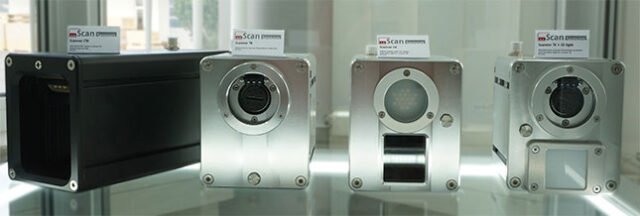 Whether woven, knitted or tufted, whether printed, coated, dyed, laminated, light or heavy: every textile manufacturer must produce thread, stitch or pattern straight goods. Distortions lower the quality and thus the price of the goods. They must therefore be reliably detected and removed at today’s standard fabric speeds, regardless of technical properties, haptics or appearance. Thanks to the largest sensor selection on the market, scanning systems from Mahlo detect virtually the entire spectrum of textile fabrics – and thus ensure straight goods.
Whether woven, knitted or tufted, whether printed, coated, dyed, laminated, light or heavy: every textile manufacturer must produce thread, stitch or pattern straight goods. Distortions lower the quality and thus the price of the goods. They must therefore be reliably detected and removed at today’s standard fabric speeds, regardless of technical properties, haptics or appearance. Thanks to the largest sensor selection on the market, scanning systems from Mahlo detect virtually the entire spectrum of textile fabrics – and thus ensure straight goods.
All-round talent optoelectronic scanning
For the majority of textile manufacturers, the solution for straight goods is optoelectronic scanning. “No other measuring principle can cover so many materials and applications fully automatically,” says Kehry. Developed by company founder Dr. Heinz Mahlo, the principle continues to set standards in the field of distortion detection today. Continuous further development and state-of-the-art digital technology make it possible to stay one step ahead of the ever more complex textile structures. “Our TK-12 sensor is capable of detecting weft and course distortion in virtually all textile structures and to determine the total distortion reliably and in real time.” This is achieved by using a suitable number of sensors that are evenly distributed across the fabric width. They detect and calculate the warpage in real time using an oscillating lens that registers the light-dark modulation. In this way, distortion is detected simultaneously across the entire width of the fabric. Distortion changes – such as in a seam – can be reacted to without delay. A connected automatic straightening machine or the machine operator can thus implement the corrections.
 Imaging scanning as a supplement
Imaging scanning as a supplement
For the few cases that cannot be scanned with the TK-12 optoelectronic sensor, Mahlo uses imaging scanning as a supplement. “Exceptions are, for example, fabrics in which, due to low fabric speeds and yarn counts, a low yarn frequency is with little pronounced light-dark modulation,” explains the textile expert. But the imaging method is also the best option for manufacturers of woven crepe, certain blackout fabrics, fabrics with untwisted weft or structures with small patterns, he says.
The course of the weft and warp threads is recorded by means of a high-resolution area scan camera with an imaging area of 4×3 cm. An intelligent algorithm in the software evaluates the captured image and determines the degree of distortion.
The best of two scanning systems
If you want to combine the best of both worlds for your production line, Mahlo opts for hybrid scanning, a combination of optoelectronic and imaging scanning. “It combines the advantages of both individual systems to form a superior system that takes a lot of work off the manufacturer’s hands,” describes Kehry. This is because, depending on the material type of the goods passing through, the software independently selects which warpage detection generates the most stable evaluation. “Especially with a wide product range with frequent fabric changes, hybrid scanning brings enormous relief.



